 To enhance service speed and avoid tariff delays, we've opened a US warehouse. All US orders ship directly from our US facility.
To enhance service speed and avoid tariff delays, we've opened a US warehouse. All US orders ship directly from our US facility.
| Cat. No. | Product Name | Field of Application | Chemical Structure |
|---|---|---|---|
| DC66168 | DSPE-PEG-ICG Featured |
DSPE phospholipids can be used as pharmaceutical excipients for emulsification and drug solubilization, and are important materials for slow release drug preparations such as liposomes, fat milk and nanoparticles in recent years.
Modification of phospholipid molecules can make these preparations have the ability of release and targeting under specific conditions.
Common modification methods include: disintegration time; Introducing immune factors to enhance targeting; Introduce markers for diagnosis and tracking.
More description
|

|
| DC66163 | DSPE-PEG-RGD Featured |
RGD's receptors are integrins αvβ3 and αvβ5, which can mimic cell adhesion proteins and bind specifically to 11 kinds of integrins, which can effectively adhere to biological materials. DSPE-PEG-RGD can be used to make micelles and vesicles. The liposomes formed by RGD-PEG-DSPE can act directly on the target to form an active targeting effect. Rgd-peg-dspe peptide RGD polyethylene glycol phospholipid can be used for passive targeting of micelles and vesicles, active targeting research and drug delivery. DSPE (1, 2-distearoyl-SN-glycerol-3-phosphate ethanolamine) is a saturated 18-carbon phospholipid commonly used in the synthesis of liposomes. Polyethylene glycol (PEG) -coupled DSPE is hydrophilic and can be used for drug delivery, gene transfection, and biomolecular modification. Polyethylene glycol can enhance solubility and stability, reduce the nonspecific binding of charged molecules, and reduce the immunogenicity of polypeptides.
More description
|

|
| DC66161 | DSPE-PEG-HSA Featured |
Serum protein is the most abundant protein in plasma. Each protein molecule can carry seven fatty acid molecules. These fatty acid molecules bind to gaps in the protein, where their carbon-rich tails are buried safely away from surrounding water molecules. Serum proteins can also carry many other molecules that are insoluble in water. Serum proteins, in particular, can carry many drug molecules, such as ibuprofen. Human serum albumin (HSA) is a highly water-soluble globular monomer plasma protein with a relative molecular weight of 67KDa, composed of 585 amino acid residues, one sulfhydryl group and 17 disulfide bonds. In nanoparticle carriers, HSA nanoparticles are characterized by their ability to bind to various drug molecules, stability during storage and in vivo use, non-toxicity and antigenicity, biodegradability, repeatability, amplification of the production process and better control of release characteristics
More description
|

|
| DC66159 | DSPE-PEG-BSA Featured |
Bovine serum albumin (BSA), a globulin in bovine serum, contains 607 amino acid residues with a molecular weight of 66.446KDa and an isoelectric point of 4.7. Bovine serum albumin has been widely used in biochemical experiments. The total length of BSA precursor protein is 607 amino acids. The precursor protein removes 18 signaling peptides and 6 propeptides from the N terminal to form a mature BSA protein with 583 amino acids and a molecular weight of about 66.5kDa. The surface of BSA contains a large number of carboxyl and amino groups, which can be used to bind the activated groups on the surface, and can be used as a carrier of small molecules. BSA is coupled with antibodies to form carrier-haptens conjugate.
More description
|

|
| DC66157 | DSPE-TK-mPEG Featured |

|
|
| DC66274 | DSPE-PEG-TPP Featured |
Triphenyl phosphate is odorless, odorless white crystalline block or powder, its chemical formula is C18H15O4P, it is insoluble in cold water, but soluble in hot water above 50℃, when the solution temperature is reduced to room temperature, hydrophobic, precipitated from the solution.
Slightly soluble in alcohol, soluble in ben, chloroform, C tong, easily soluble in ethyl mi. Triphenyl phosphate can be used as cellulose resin, vinyl resin, natural rubber and synthetic rubber flame retardant plasticizer with high flame retardant efficiency, excellent mechanical properties retention rate, transparency, softness and toughness, used in cellulose nitrate, various coatings, triacetate thin fat and film.
Rigid polyurethane foam, engineering plastics plasticizer, flame retardant additive. Plastics are more and more widely used in construction, transportation, aviation, electrical appliances, daily furniture and other fields, but the fire accidents caused by the flammability of plastics have increasingly become a major problem, so the research and production of flame retardants have developed rapidly.
Triphenyl phosphate is one of the main phosphorous flame retardants. (Flame retardant TPP) is a phosphorus-containing compound that can be used as a halogen-free environmentally friendly flame retardant for dissolution in organic solvents. Mainly used as a flame retardant plasticizer for engineering plastics and phenolic resin laminates; Pegylated phospholipids modified by TPP can be applied in drug release, nanotechnology and new materials research, and cell culture. As well as ligand research, peptide synthesis support, grafted polymer compounds, new materials and pegylated modified functional coatings and other active compounds.
More description
|

|
| DC66273 | DSPE-PEG-CHO Featured |
DSPE phospholipids can be used as pharmaceutical excipients for emulsification and drug solubilization, and are important materials for slow release drug preparations such as liposomes, fat milk and nanoparticles in recent years.
Modification of phospholipid molecules can make these preparations have the ability of release and targeting under specific conditions.
Common modification methods include: disintegration time; Introducing immune factors to enhance targeting; Introduce markers for diagnosis and tracking.
A covalent bond in the carbonyl group is connected to the hydrogen atom and formed by a univalent atomic group, called aldehyde group, aldehyde group structure simple formula is -CHO, aldehyde group is a hydrophilic group, so the organic matter with aldehyde group (such as acetaldehyde, etc.) has a certain water solubility. Aldehydes, sugars, aldehydes, glucose, maltose and other molecules contain aldehyde groups.
The aldehydes are active and prone to condensation and nucleophilic addition reactions. The aldehyde group can be reduced to hydroxymethyl (-CH2OH) or oxidized to carboxylic (-COOH).
More description
|

|
| DC66281 | DSPE-PEG-VE Featured |
2-Distearoyl-sn-Glycero-3-Phosphoethanolamine(DSPE) conjugated polyethylene glycol is a combination of phospholipid and polyethylene glycol, which has hydrophilicity and hydrophobicity. Polyethylene glycol phospholipid liposomes can be used for drug delivery, gene transfection and vaccine delivery. Pegylated phospholipids can significantly improve blood circulation time and stabilize drug encapsulation. These materials can also be used for targeted drug delivery by modifying ligands with target surfaces such as antibodies and peptides,Liposomes.
More description
|

|
| DC66279 | DSPE-PEG-PEI Featured |
Polyethyleneimine (PEI), also known as polyethyleneimine, is a water-soluble polymer. Colorless or yellowish viscous liquid, hygroscopic, soluble in water, ethanol, insoluble in benzene.
PEG-PEI, a copolymer of cationic poly (ethylene imide) (PEI) and polyethylene glycol (PEG), is a well-studied compound that significantly improves the delivery of oligonucleotides and nucleic acids (DNA, siRNA) in vitro and in vivo. By varying the MW of PEI and PEG, PEG-PEI drug conjugates, polymers, or nanoparticles with dynamic range of size, surface charge, and stability can be prepared, all of which are important for transfection efficiency.
PEI-PEG-DSPE, polyethylenimine-PEGyl-phospholipid is an AB block copolymer with phospholipids at the end of PEG that can be used in drug delivery systems. DSPE, 1, 2-distearoyl-SN-glycerol-3-phosphate ethanolamine is a synthetic phospholipid that can be used as a membrane material with solubility and is suitable for the development of liposomes and phospholipid complexes.
More description
|

|
| DC66278 | DSPE-PEG-AC Featured |
DSPE-PEG-AC phospholipid PEG derivative used in the preparation of liposomes, phospholipatized polyethylene glycol binding has both hydrophilic and hydrophobic properties.
Acrylate functionalized PEG is a common polymer for preparing biocompatible and biodegradable hydrogels and other biopolymers. Functionalized polyethylene glycol can be used to modify proteins, peptides, and materials, but also to increase solubility and stability, and reduce peptide and protein immunogenicity. It can also inhibit the non-specific combination of charged molecules to modify the surface. The product can be used in drug release, nanotechnology and new materials research, cell culture.
As well as ligand research, peptide synthesis support, grafted polymer compounds, new materials and pegylated modified functional coatings and other active compounds.
More description
|
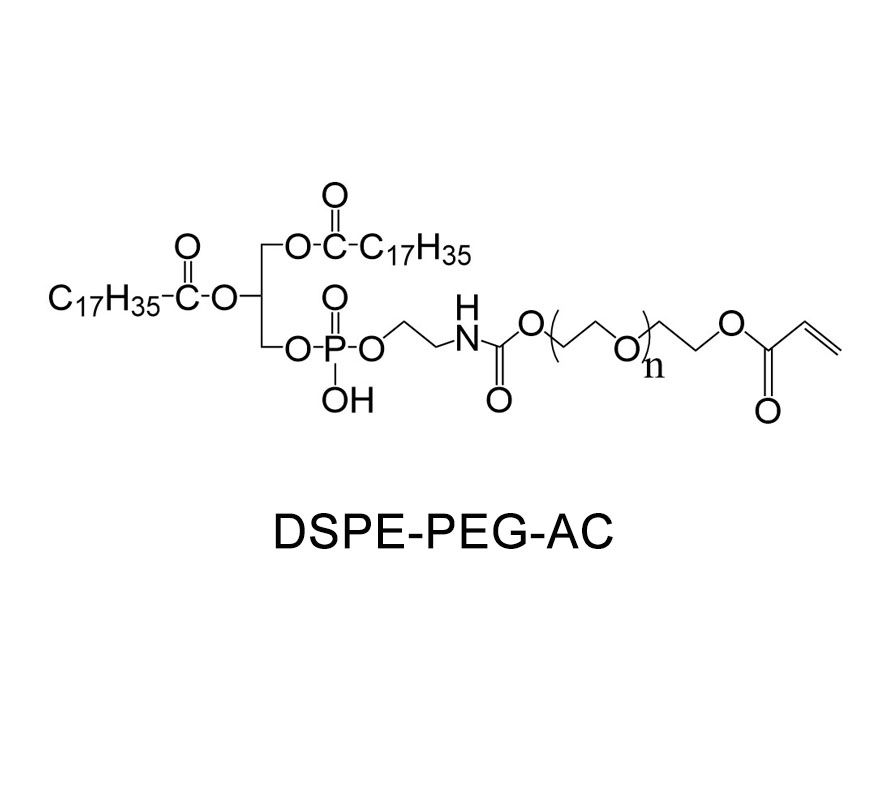
|
| DC66115 | DSPE-PEG-OH Featured |
DSPE-PEG-OH, MW 2000 is a PEG-based PROTAC linker that can be used in the synthesis of PROTACs. Additionally, DSPE-PEG-OH, MW 2000 can also be used for drug delivery.
More description
|

|
| DC66113 | DSPE-PEG-FA Featured |
Phospholipid polyethylene glycol folate (dspe-peg-fa), carboxyl group and amino group form amide bond. This reaction makes folate ligand attach to protein, antibody, peptide or particle surface. Pegylated folate has good water solubility and bioactivity. Folate functionalized substrates have been used for targeted drug delivery, imaging and bioassay. DSPE (1,2-distearyl-sn-glycerin-3-phosphate ethanolamine) is a saturated 18 carbon phospholipid, which is commonly used in the synthesis of liposomes. Polyethylene glycol (PEG) - coupled DSPE is hydrophilic and can be used for drug delivery, gene transfection and biomolecular modification.
More description
|

|
| DC66100 | DSPE-Biotin Featured |
DSPE-Biotin is a lipid. DSPE-Biotin can be used for the research of various biochemical.
More description
|
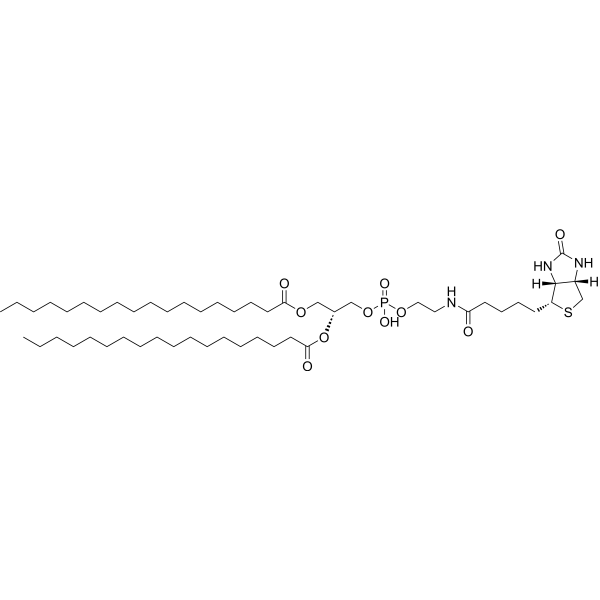
|
| DC66119 | DSPE-MPEG Featured |
2-Distearoyl-sn-Glycero-3-Phosphoethanolamine(DSPE) conjugated polyethylene glycol is a combination of phospholipid and polyethylene glycol, which has hydrophilicity and hydrophobicity. Polyethylene glycol phospholipid liposomes can be used for drug delivery, gene transfection and vaccine delivery. Pegylated phospholipids can significantly improve blood circulation time and stabilize drug encapsulation. These materials can also be used for targeted drug delivery by modifying ligands with target surfaces such as antibodies and peptides,Liposomes.
More description
|

|
| DC66094 | DSPE-CY5.5 Featured |
Phospholipids DSPE belong to the lipid family of biopolymers. Phospholipids consist of two fatty acids, a glycerol unit, a phosphate group, and a polar molecule. The phosphate groups and polar head regions of the molecule are hydrophilic (attracted to water), while the fatty acid tail is hydrophobic (repelled by water). When placed in water, the phospholipids Orient themselves into a double layer, where the non-polar tail region faces the inner region of the double layer. The polar head region faces outward and interacts with the water. Applications in drug release, nanotechnology and new materials research, cell culture. As well as ligand research, peptide synthesis support, grafted polymer compounds, new materials and pegylated modified functional coatings and other active compounds.
More description
|

|
| DC66101 | DSPE-COOH Featured |
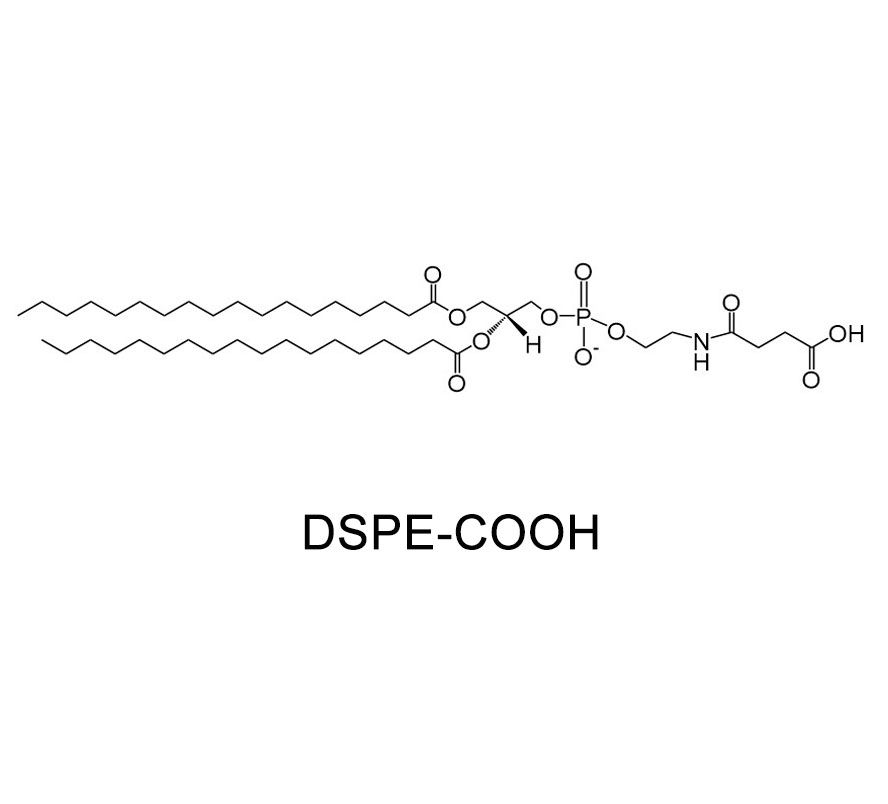
|
|
| DC66098 | DSPE-FITC Featured |
Phospholipids DSPE belong to the lipid family of biopolymers. Phospholipids consist of two fatty acids, a glycerol unit, a phosphate group, and a polar molecule. The phosphate groups and polar head regions of the molecule are hydrophilic (attracted to water), while the fatty acid tail is hydrophobic (repelled by water). When placed in water, the phospholipids Orient themselves into a double layer, where the non-polar tail region faces the inner region of the double layer. The polar head region faces outward and interacts with the water. Applications in drug release, nanotechnology and new materials research, cell culture. As well as ligand research, peptide synthesis support, grafted polymer compounds, new materials and pegylated modified functional coatings and other active compounds.
More description
|
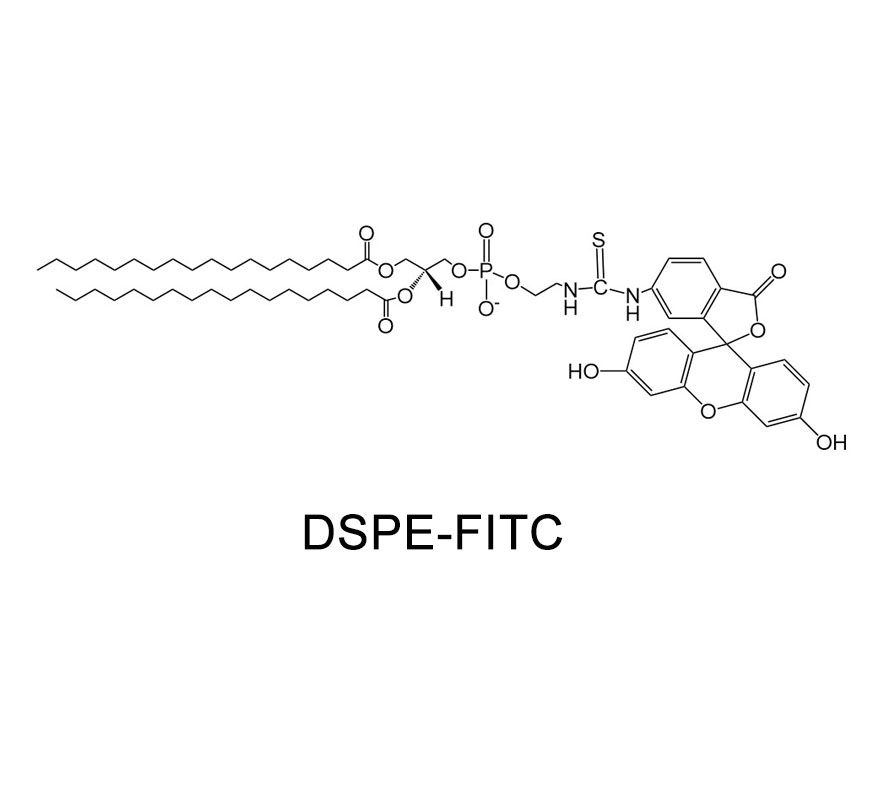
|
| DC72426 | DSPE-SPDP Featured |
DSPE-SPDP is a phospholipid molecule. DSPE-SPDP can orient itself to form lipid bilayer in water. DSPE-SPDP can be used for the research of various biochemical.
More description
|
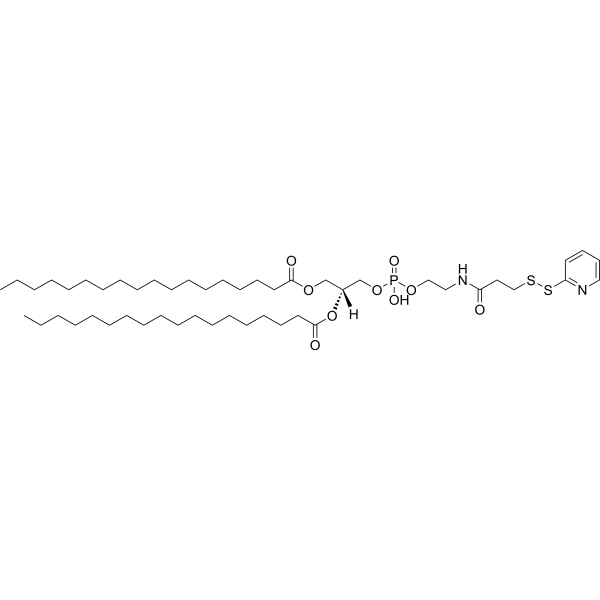
|
| DC66096 | DSPE-CY3 Featured |
Phospholipids DSPE belong to the lipid family of biopolymers. Phospholipids consist of two fatty acids, a glycerol unit, a phosphate group, and a polar molecule. The phosphate groups and polar head regions of the molecule are hydrophilic (attracted to water), while the fatty acid tail is hydrophobic (repelled by water). When placed in water, the phospholipids Orient themselves into a double layer, where the non-polar tail region faces the inner region of the double layer. The polar head region faces outward and interacts with the water. Applications in drug release, nanotechnology and new materials research, cell culture. As well as ligand research, peptide synthesis support, grafted polymer compounds, new materials and pegylated modified functional coatings and other active compounds.
More description
|

|
| DC66093 | DSPE-CY7 Featured |
Phospholipids DSPE belong to the lipid family of biopolymers. Phospholipids consist of two fatty acids, a glycerol unit, a phosphate group, and a polar molecule. The phosphate groups and polar head regions of the molecule are hydrophilic (attracted to water), while the fatty acid tail is hydrophobic (repelled by water). When placed in water, the phospholipids Orient themselves into a double layer, where the non-polar tail region faces the inner region of the double layer. The polar head region faces outward and interacts with the water. Applications in drug release, nanotechnology and new materials research, cell culture. As well as ligand research, peptide synthesis support, grafted polymer compounds, new materials and pegylated modified functional coatings and other active compounds.
More description
|

|
| DC65618 | DSPE-NHS Featured |
DSPE-NHS is a bioconjugation phospholipid molecule with two hydrophobic lipid tails. DSPE-NHS is a self-assembling reagent which forms lipid bilayer in aqueous solution. DSPE-NHS can be used to prepare liposomes as drug nanocarrier.
More description
|
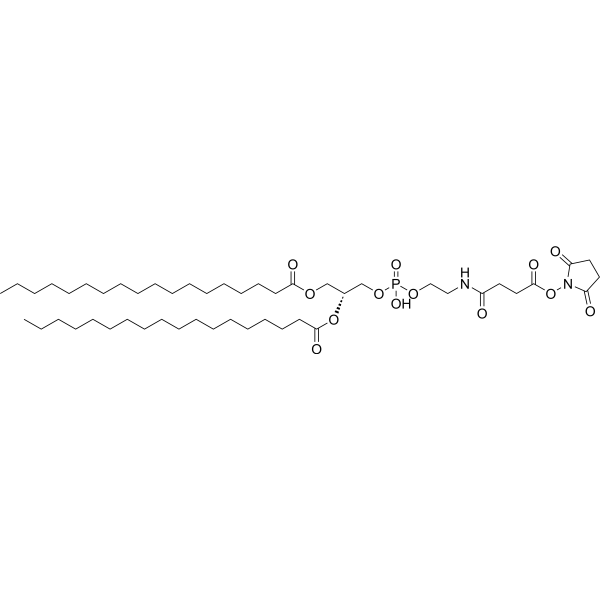
|
| DC66095 | DSPE-CY5 Featured |
Phospholipids DSPE belong to the lipid family of biopolymers. Phospholipids consist of two fatty acids, a glycerol unit, a phosphate group, and a polar molecule. The phosphate groups and polar head regions of the molecule are hydrophilic (attracted to water), while the fatty acid tail is hydrophobic (repelled by water). When placed in water, the phospholipids Orient themselves into a double layer, where the non-polar tail region faces the inner region of the double layer. The polar head region faces outward and interacts with the water. Applications in drug release, nanotechnology and new materials research, cell culture. As well as ligand research, peptide synthesis support, grafted polymer compounds, new materials and pegylated modified functional coatings and other active compounds.
More description
|

|
| DC72430 | DSPE-Mal Featured |
DSPE-MAL is a thiol reactive a phospholipid compound. DSPE-MAL has two saturated fatty acids and can self-assemble in water to form lipid bilayer. DSPE-MAL can be used to prepare liposomes as drug nanocarrier.
More description
|

|
| DC66105 | DSPE-PEI Featured |
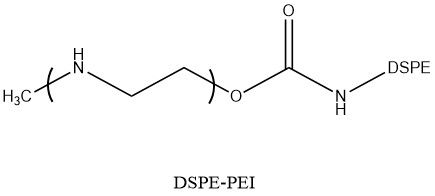
|
|
| DC66104 | DSPE-ICG Featured |
ICG indocyanine green is a three carbon cyanine dye with good water solubility and a molecular weight of 775. Indocyanine green can almost completely bind to plasma proteins in plasma and whole blood, ensuring that it remains almost completely in Xueguan and is not easily diffused outward. Indocyanine green (ICG) is a near-infrared imaging reagent currently approved by the US Food and Drug Administration (FDA) for clinical use. ICG is a three carbon cyanine dye with near-infrared characteristic absorption peaks, emission wavelengths between 795 and 845nm, and has amphiphilic structures that are both hydrophilic and lipophilic. Near infrared light has a greater penetration depth in tissues and is less affected by biological tissue background, Due to its near-infrared absorption and emission fluorescence characteristics, ICG can be used as an excellent tissue penetrating agent in vivo.
More description
|

|
| DC66103 | DSPE-NH2 Featured |
Phosphatidyl amino DSPE-NH2 is one of the most common materials in polymer modification.
By grafting phospholipid bonds to amino molecules, polymeric polymers with different chain segments are formed by using phospholipid molecules, which reduces the thermal stability and weather resistance of the materials.
At the same time, by introducing modifiers to improve the water resistance of the polymer itself, improve its processing performance, and finally obtain good water resistance, high mechanical properties, good weather resistance, good acid and alkali resistance products.
DSPE-NH2 material is mainly composed of isopropyl alcohol butadiene, the isopropyl alcohol butadiene mixture is an aromatic polymer, with strong water absorption, hydrophilicity, and wide molecular weight distribution, good solubility, high mechanical strength characteristics, so the material can be used in many fields.
More description
|

|
| DC66102 | DSPE-SH Featured |
Modified phospholipid products: it is to modify the amino group (primary amino group) -NH3 at the end of DSPE into NHS, COOH, N3, MAL, Thiol (SH), OPSS, FITC, FA, Biotin and other different active groups.
Phospholipids DSPE belong to the lipid family of biopolymers. Phospholipids consist of two fatty acids, a glycerol unit, a phosphate group, and a polar molecule.
The phosphate groups and polar head regions of the molecule are hydrophilic (attracted to water), while the fatty acid tail is hydrophobic (repelled by water).
When placed in water, the phospholipids Orient themselves into a double layer, where the non-polar tail region faces the inner region of the double layer. The polar head region faces outward and interacts with the water.
More description
|
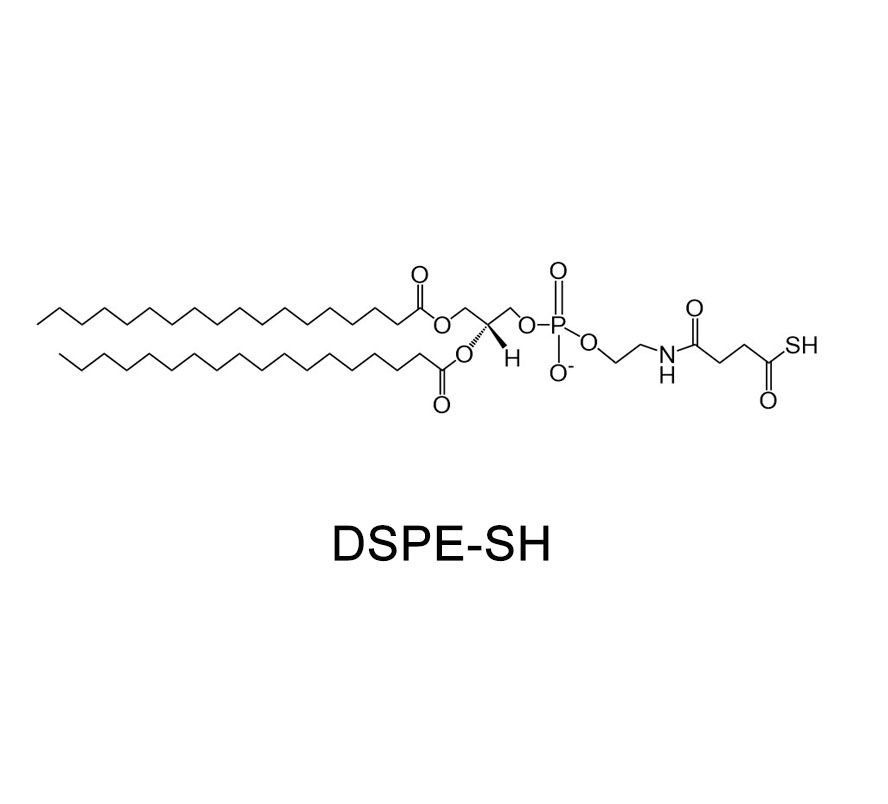
|
| DC66099 | DSPE-FA Featured |

|
|
| DC66097 | DSPE-RB Featured |
Phospholipids DSPE belong to the lipid family of biopolymers. Phospholipids consist of two fatty acids, a glycerol unit, a phosphate group, and a polar molecule. The phosphate groups and polar head regions of the molecule are hydrophilic (attracted to water), while the fatty acid tail is hydrophobic (repelled by water). When placed in water, the phospholipids Orient themselves into a double layer, where the non-polar tail region faces the inner region of the double layer. The polar head region faces outward and interacts with the water. Applications in drug release, nanotechnology and new materials research, cell culture. As well as ligand research, peptide synthesis support, grafted polymer compounds, new materials and pegylated modified functional coatings and other active compounds.
More description
|
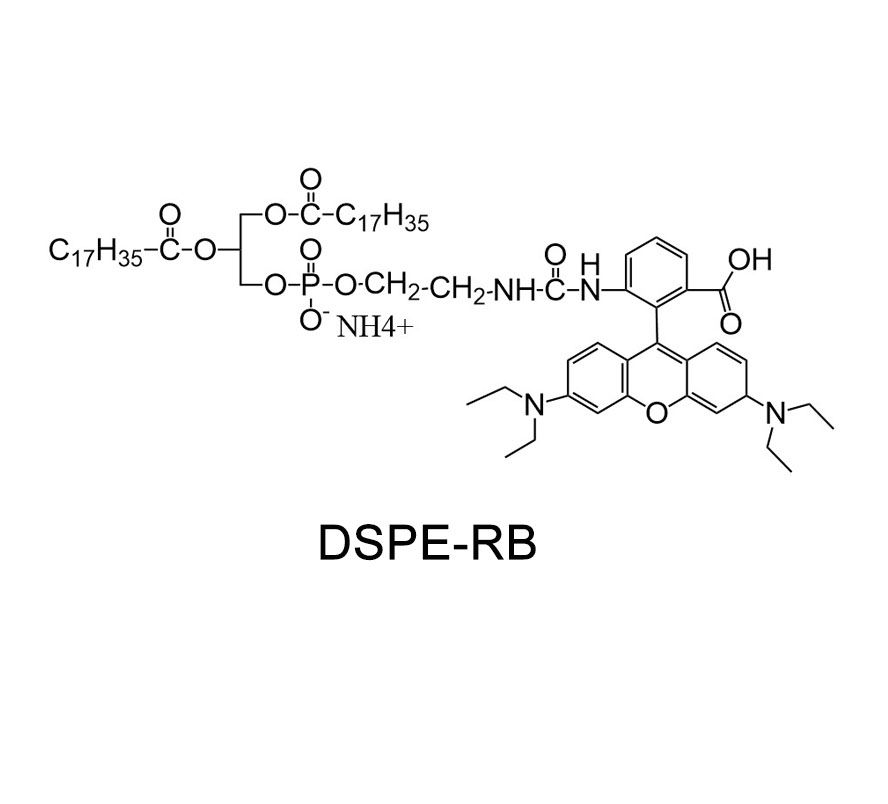
|
| DC72432 | DSPE-N3 Featured |
DSPE-N3 is a lipid. DSPE-N3 can be used for the research of various biochemical.
More description
|

|